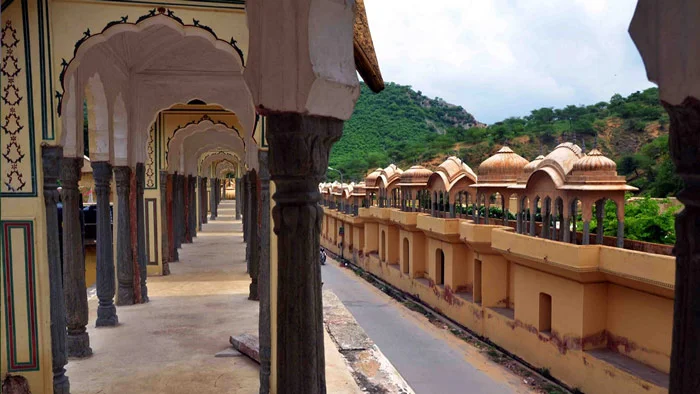Ghat ki Guni or Ghat Ki Ghuni is a beautifully carved narrow alley stretching between eastern hill range of Aravalis in Jaipur which provide access to the areas situated in the east side of Jaipur & beyond.
Ghat ki Guni is also a starting point of the road leading to Agra -the city of Taj Mahal, hence called Agra Road.
Reginald Herber, Bishop & traveler who came to Jaipur on 28 January 1825 had described Ghat ki Guni in his memoir – Narrative of a Journey through the Upper Provinces of India from Calcutta to Bombay 1824–1825.
“….The pass grew narrower, the path steeper & more rugged as we proceeded along with it & the little stream which we were ascending instead of dimpling amid the grass & stones now leapt & bounded from crag to crag like a Welsh rivulet. Still all was wild & dismal when on a turn of road we found ourselves in front of a high turreted & battlement wall, pierced with a tier of arched window & showing us beyond them the dark green shades of a large oriental garden……”
Founded by Maharaja Sawai Jai Singh II, the founder of Jaipur city in 1739, Ghat ki Guni area envisaged the Mughal style terraced gardens such as Vidhyadhar Garden and Raj Niwas Garden.
These gardens were inspired by Mughal gardens of Delhi, Kashmir and elsewhere. Apart from these gardens, there are dwelling units, Havelis and many temples at both sides of the road. Over the period of time, people moved out of these buildings and the area stands deserted as of now, leaving the marks of a beautiful surroundings where chhatris and jharokhas run parallel in one line, leaving one stunned at the marvel of the beautiful architecture.


